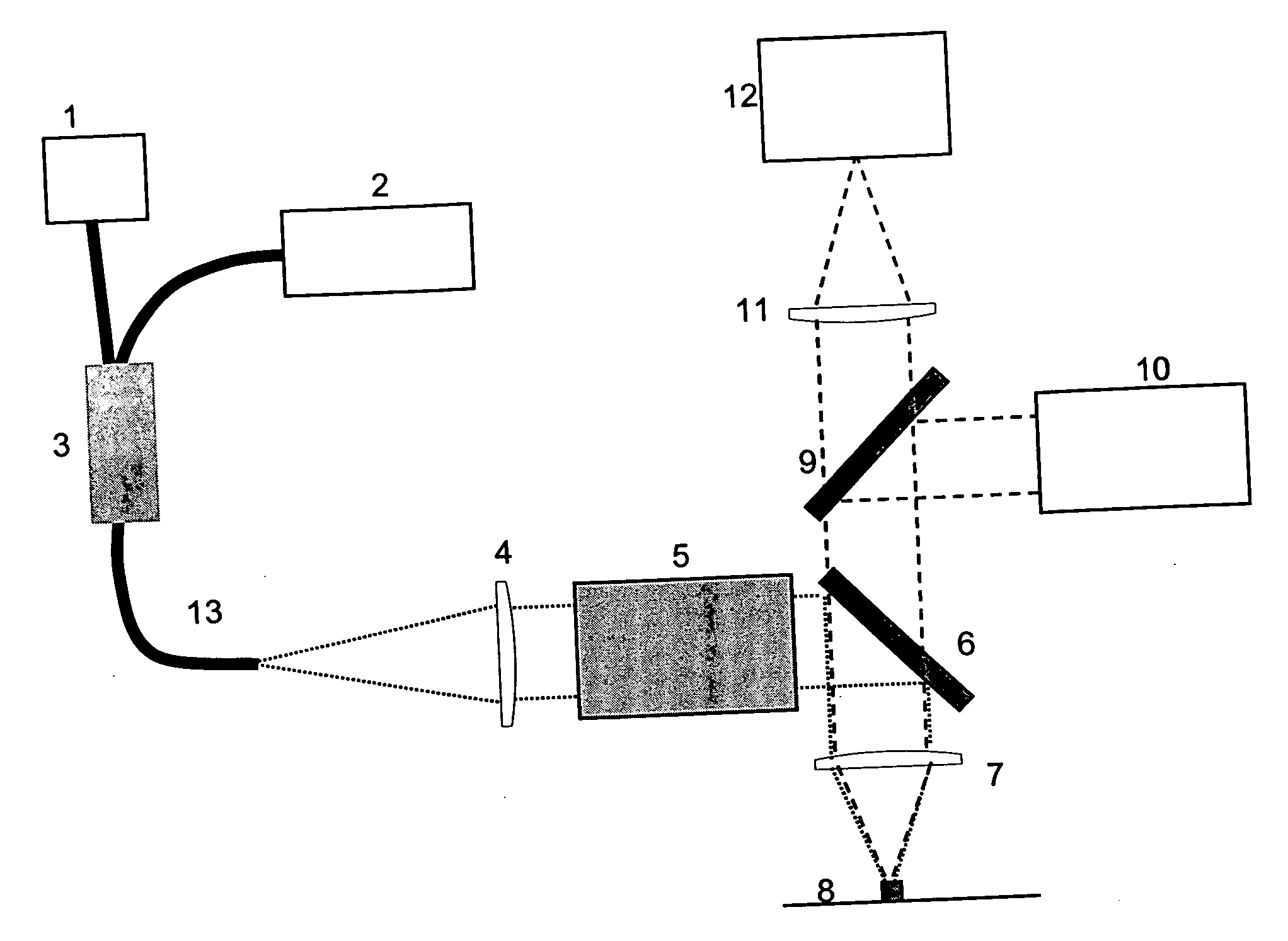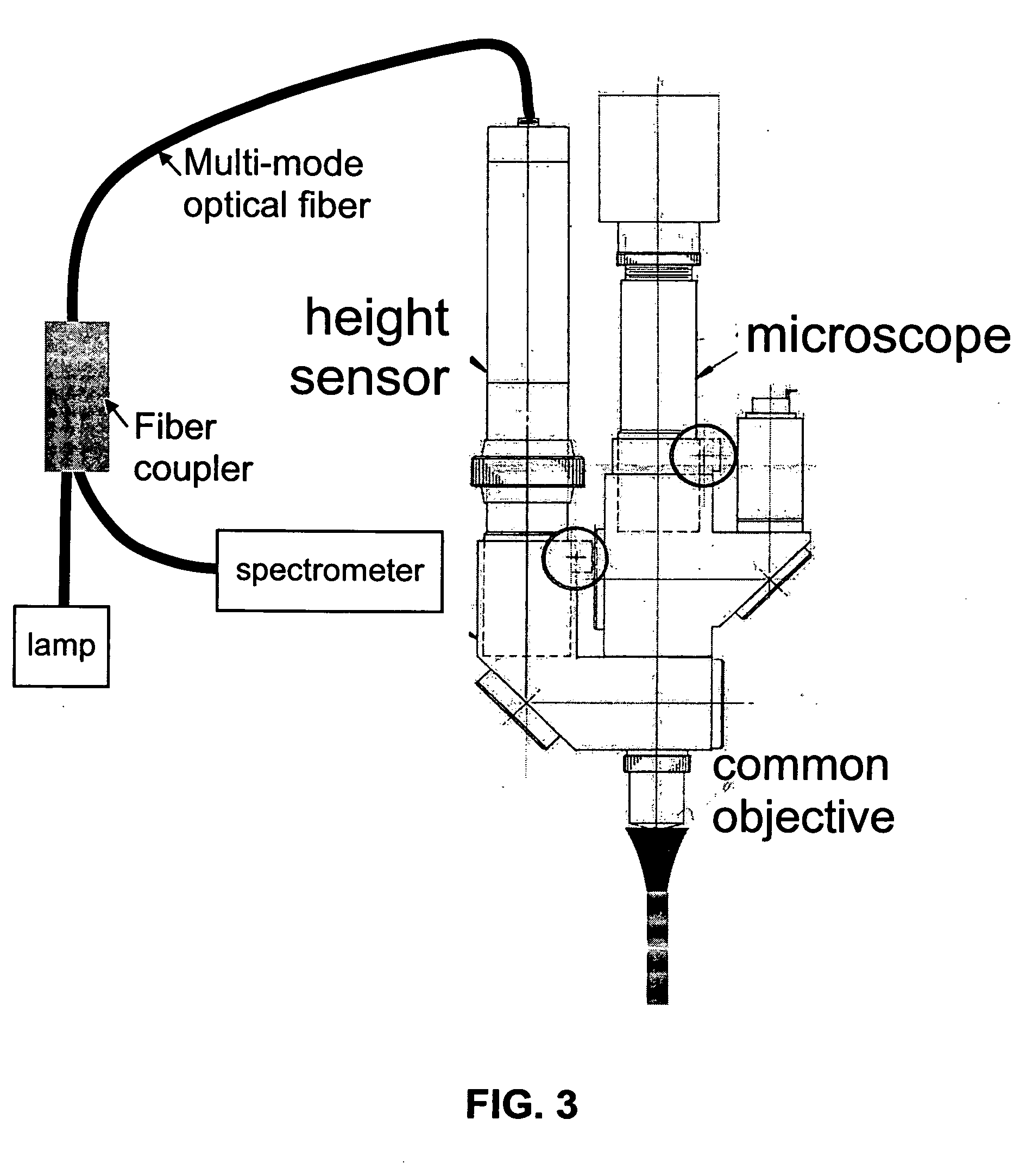Trench measurement system employing a chromatic confocal height sensor and a microscope
a technology of chromatic confocal and height sensor, which is applied in the direction of instruments, measurement devices, microscopes, etc., can solve the problems that the current metrology technology cannot measure the depth of high aspect ratio trenches with speed and accuracy, and profiling instruments using a stylus or other method of contact cannot accommodate an aspect ratio or lateral dimension, so as to achieve fast mechanical movement
- Summary
- Abstract
- Description
- Claims
- Application Information
AI Technical Summary
Benefits of technology
Problems solved by technology
Method used
Image
Examples
Embodiment Construction
[0026] The present invention integrates a simple and inexpensive chromatic confocal height sensor with a simple and inexpensive microscope (FIG. 3). The combination creates a system that measures the height of the object at one location in the microscope's field of view, while simultaneously providing a traditional microscope image indicating exactly the location on the object where the height measurement occurs. In addition, this invention includes a method for using the integrated system to measure the depth of a high aspect ratio trench.
[0027] One object of the present invention is to combine a traditional imaging microscope with a chromatic confocal, single point, height sensor. This combination instantaneously provides an image of the object and the height value at one point in the image. No mechanical movement is necessary anywhere in the system to achieve that result. However, if height measurements are required in multiple locations, lateral mechanical movement can be used ...
PUM
 Login to View More
Login to View More Abstract
Description
Claims
Application Information
 Login to View More
Login to View More - R&D
- Intellectual Property
- Life Sciences
- Materials
- Tech Scout
- Unparalleled Data Quality
- Higher Quality Content
- 60% Fewer Hallucinations
Browse by: Latest US Patents, China's latest patents, Technical Efficacy Thesaurus, Application Domain, Technology Topic, Popular Technical Reports.
© 2025 PatSnap. All rights reserved.Legal|Privacy policy|Modern Slavery Act Transparency Statement|Sitemap|About US| Contact US: help@patsnap.com



